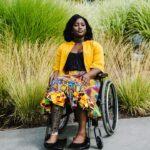Hey there, fellow advocates for empathy and understanding! Today, we’re delving into a topic that’s close to the hearts of many: medical bias and its impact on the sickle cell community. But fear not, we’re also exploring the resilience and strength found within the community, as they redefine what it means to live with an invisible illness. So, grab your favorite snack, get comfy, and let’s dive in.
Let's Talk Sickle Cell: Why Health Equity Should Be Everyone's Concern
Medical Bias and the Sickle Cell Community
Medical bias is a harsh reality for many individuals living with sickle cell disease. From dismissive attitudes to delayed or inadequate care, the journey of a sickle cell warrior often involves navigating a healthcare system that doesn’t fully understand or appreciate their unique needs.
For far too long, sickle cell disease has been overshadowed by other conditions, leading to misconceptions, stereotypes, and ultimately, barriers to proper care. But here’s the thing: the sickle cell community is resilient. Despite facing adversity at every turn, they’ve found strength in solidarity and support, rewriting the narrative of what it means to live with an invisible illness.
From Invisible Illness to Identity: The Sickle Cell Warrior
The term “invisible illness” has evolved from a mere descriptor to a powerful form of identity for sickle cell warriors. It encapsulates the daily struggles, triumphs, and resilience of those living with a condition that often goes unseen and misunderstood by society.
But here’s the beauty of it: despite its invisibility, the sickle cell community refuses to remain silent. They’re raising their voices, sharing their stories, and demanding the recognition and respect they deserve. Through advocacy, education, and community building, they’re turning their invisible illness into a visible force for change.


Four Tips for Mental Wellness and Building Micro Communities of Care
- Practice Self-Care: Take time to prioritize your mental and emotional well-being. Whether it’s through meditation, journaling, or simply taking a walk in nature, find what works for you and make it a priority.
- Check In With Others: Reach out to friends, family, and colleagues to see how they’re doing. A simple text or phone call can make a world of difference to someone who’s feeling isolated or overwhelmed.
- Build Support Networks: Create micro communities of care within your workplace or community. Organize support groups, wellness workshops, or social gatherings where people can come together to share their experiences and support one another.
- Educate Yourself: Take the time to learn about the experiences of those living with chronic illnesses like sickle cell disease. Listen to their stories, ask questions, and challenge your own biases and assumptions. By becoming more informed, you can better understand and support those in need.

Be Kind, Be Understanding, Be There
As we wrap up our discussion, I want to leave you with a simple but powerful call to action. Let’s all do our small part to be understanding to those battling long-term chronic illnesses. Whether it’s being a friend, offering a listening ear, or simply showing kindness and empathy, we can all make a difference in someone’s life.
So, let’s commit to being there for each other, building networks of support and understanding, and amplifying the voices of those living with invisible illnesses like sickle cell disease. Together, we can create a more compassionate and inclusive world for all.
With kindness and in solidarity,



